Foxglove varieties – 16 stunning, pollinator-friendly options for cottage garden charm
Enchanting and architectural, foxgloves are a dramatic addition to a summer garden

Rachel Bull
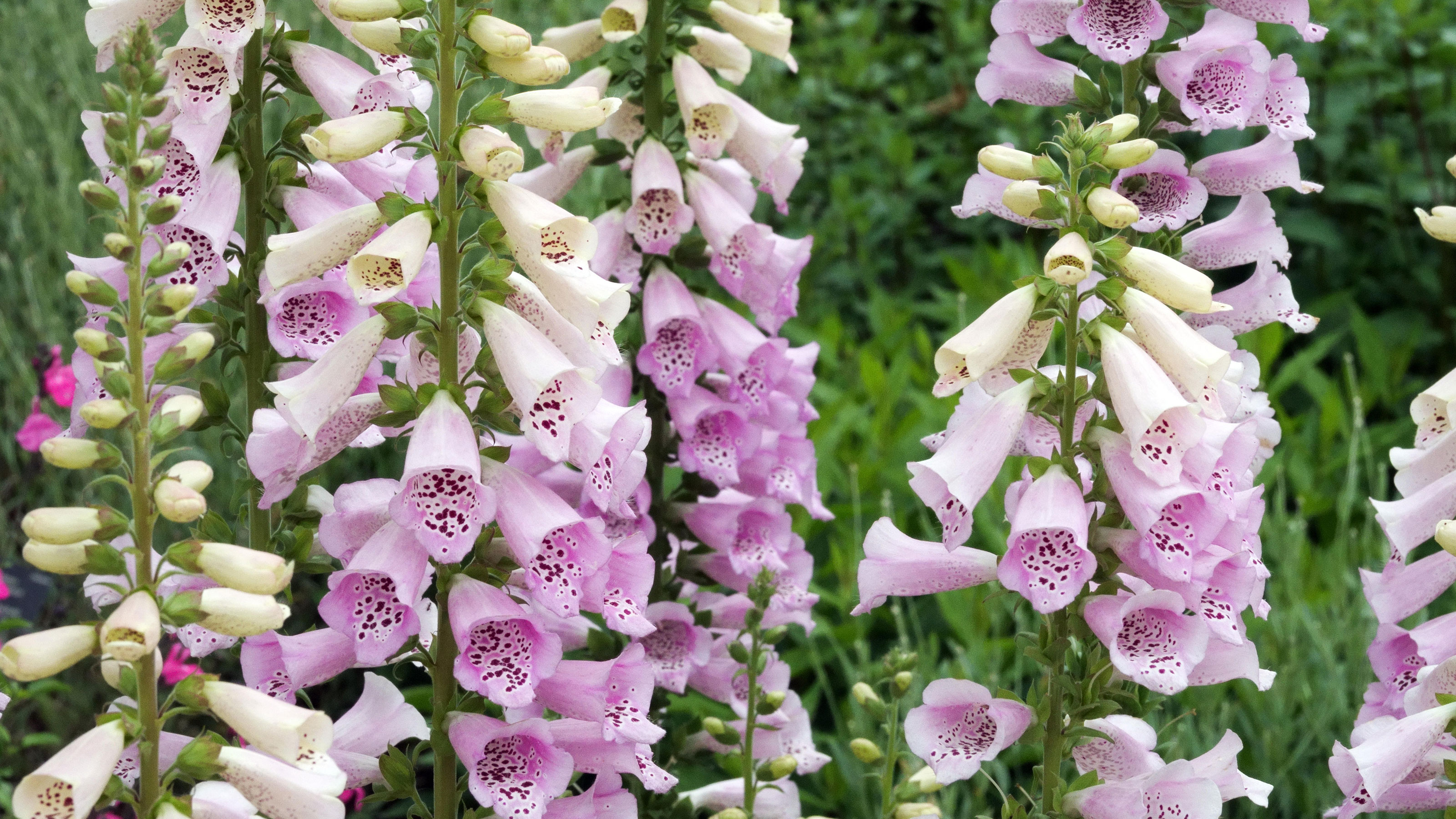
- 1. Digitalis grandiflora
- 2. Digitalis lutea
- 3. Digitalis purpurea 'Primrose Carousel’ (Carousel Series)
- 4. Digitalis ferruginea
- 5. Digitalis parviflora Jacq.
- 6. Digitalis lanata
- 7. Digitalis obscura
- 8. Digitalis purpurea ’Sutton’s Apricot’
- 9. Digitalis canariensis (syn. Isoplexis canariensis)
- 10. Digitalis purpurea f. albiflora
- 11. Digitalis purpurea subsp. heywoodii 'Silver Fox’
- 12. Digitalis purpurea 'Dalmatian White' (Dalmatian Series)
- 13. Digitalis x mertonensis
- 14 Digitalis \00d7 valinii Foxlight Rose Ivory (Foxlight Series)
- 15. Digitalis purpurea ‘Pink Gin’
- 16. Digitalis purpurea ‘Camelot Lavender’ (Camelot Series)
There are so many foxgloves varieties to choose from that you'll be spoiled for choice if you want to add some to your planting scheme. Producing slender spikes of flowers, foxgloves or Digitalis create vertical accents through a border. The statuesque spires show off the other plants around them and provide a great food source for bumblebees.
Of the 20 species of Digitalis, most are perennials, but the best known is the biennial purple-pink D. purpurea, which grows wild in and around woodland.
There is a huge range of D. purpurea cultivars on offer. Sow these biennial foxglove varieties in early summer for flowers next year or buy them ready-grown as bedding plants. Be warned that if the plants don’t have flowers or buds on them now, no matter whether you give the right foxglove care or not, they won’t bloom until next spring.
16 of the best foxglove varieties
Perennial foxgloves will flower year after year, although they can be short-lived and therefore may only last for 3-5 years. They include the rusty foxglove (D. ferruginea), which has small amber-buff bells on 4ft (1.2m) stems, and the yellow foxglove (D. grandiflora), which has large primrose bells on 2ft (60cm) stems.
The wild biennial foxglove, D. purpurea, is purple pink, and there is a graceful white form of it (D. purpurea f. alba), as well as a huge range of hybrids available in shades of pink, purple, pale-yellow, white, and peach.
There are lots of lesser-known perennial foxglove varieties, which provide food for bees. Two of the best are D. lutea and D. grandiflora, which have pale-yellow flowers. Although they are short-lived perennials, they do self-seed, which is a big bonus.
1. Digitalis grandiflora
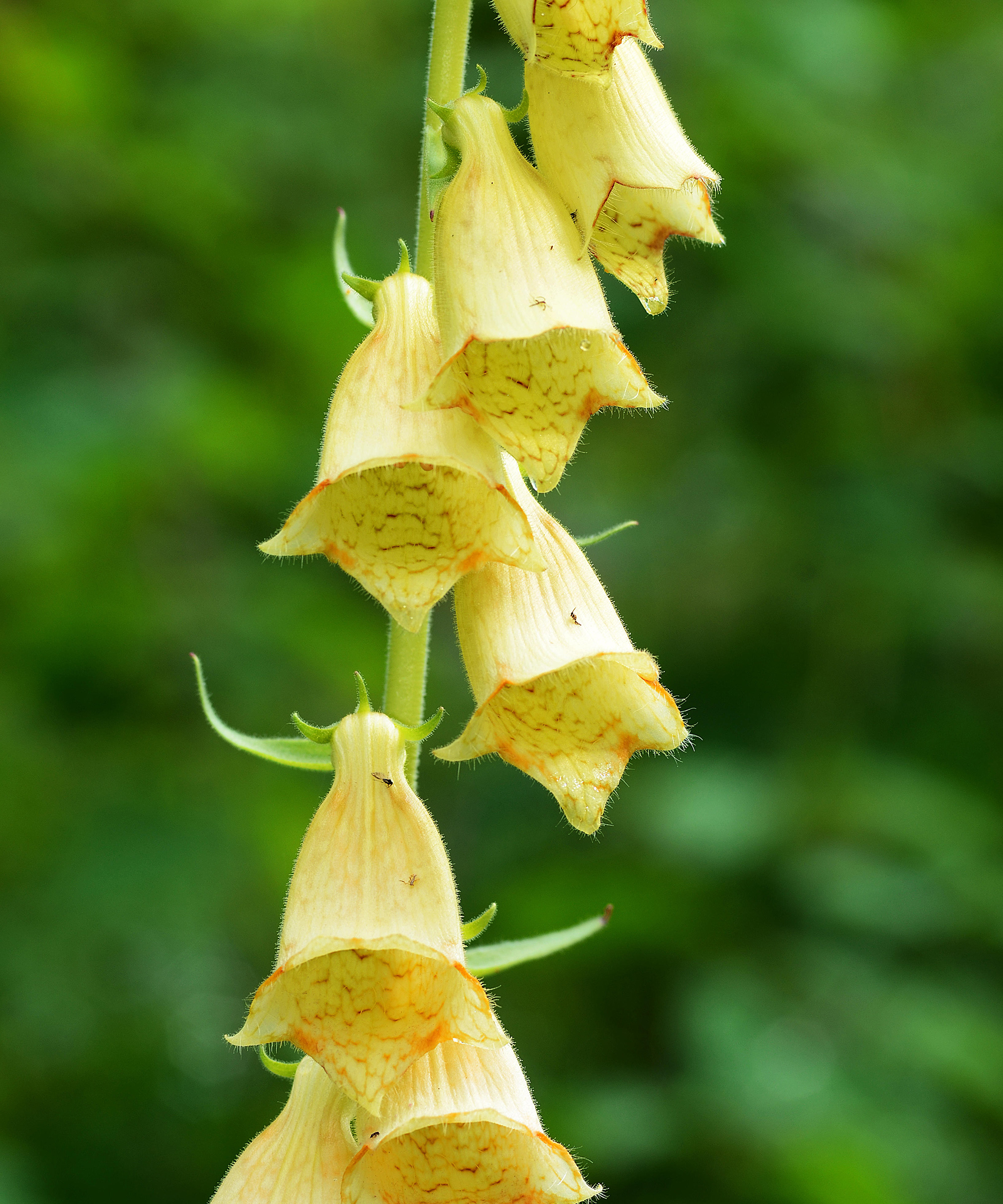
- Hardiness: USDA 3-8
- Height: 2-3ft (60-90cm)
This foxglove variety is a lovely perennial with large bell-shaped pale yellow flowers above evergreen leaves from late spring to summer.
Design expertise in your inbox – from inspiring decorating ideas and beautiful celebrity homes to practical gardening advice and shopping round-ups.
It lives for 3-5 years and self-seeds in well-drained, humus-rich soil in semi-shade. It will grow in sun if the soil doesn’t dry out.
This pretty variety works really well when planted with the lilac flowers of the spring and summer flowering Campanula persicifolia.
2. Digitalis lutea
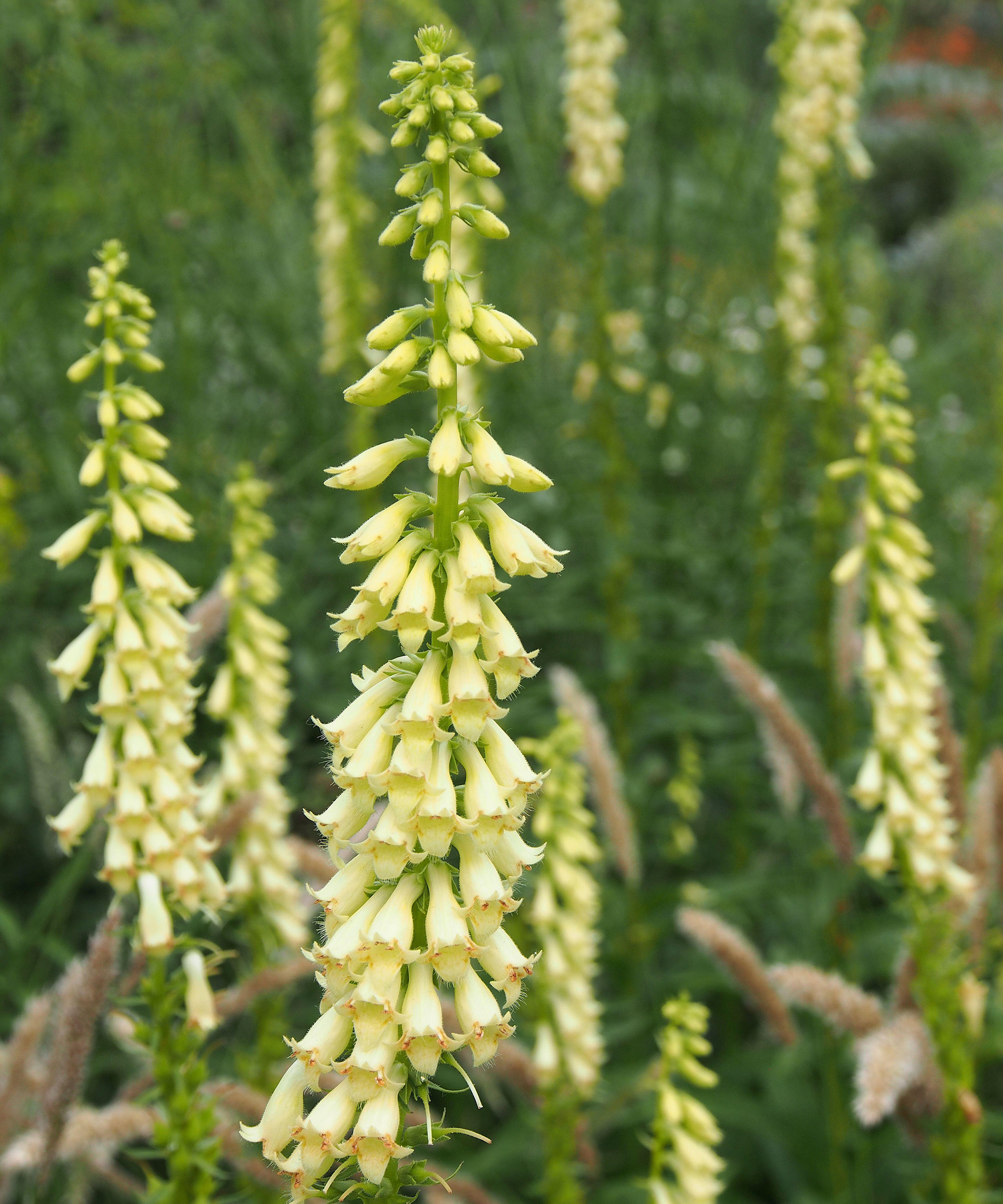
- Hardiness: USDA 3-8
- Height: 2-3ft (60-90cm)
The straw foxglove is an elegant, reliable perennial originating from Central Europe, which sends up slender stalks of small, narrow yellow-cream flowers above glossy green leaves during summer.
As with all foxglove varieties, this would make an ideal cottage garden plant. It will also self-seed in well-drained, retentive, humus-rich soil in sun or semi-shade.
A good planting partner is Polygonatum × hybridum.
3. Digitalis purpurea 'Primrose Carousel’ (Carousel Series)
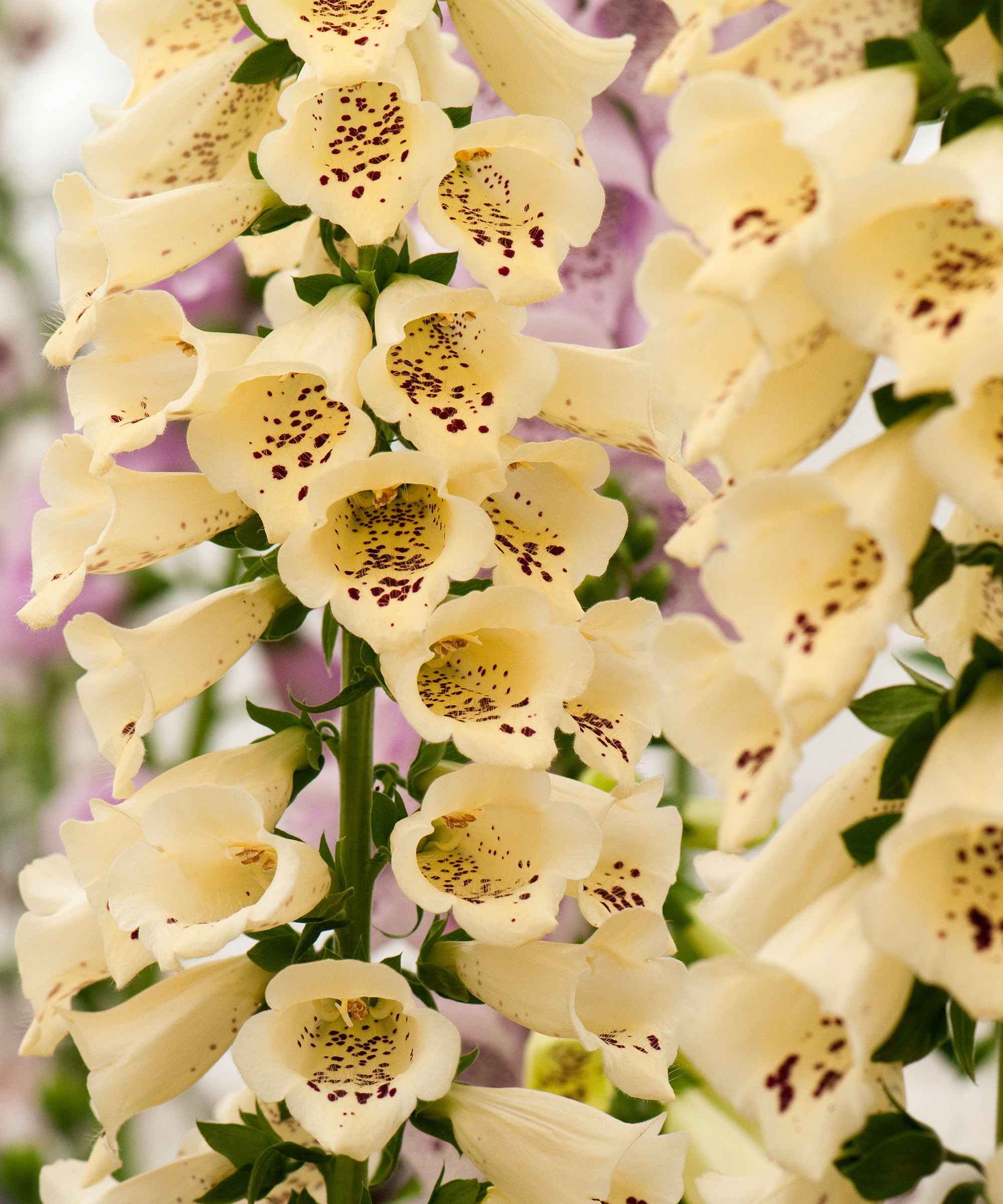
- Hardiness: USDA 4-8
- Height: 2.5ft (75cm)
A biennial with pale ice-cream yellow flowers speckled plum in late spring and early summer. It doesn’t grow too tall, making it ideal for the front or middle of the border amongst your summer bulbs.
Best in well-drained, retentive, fertile soil in semi-shade. Grow alongside the hardy geranium Rozanne for a pretty planting scheme.
You can find a mix of Digitalis purpurea seeds from True Leaf Market.
4. Digitalis ferruginea
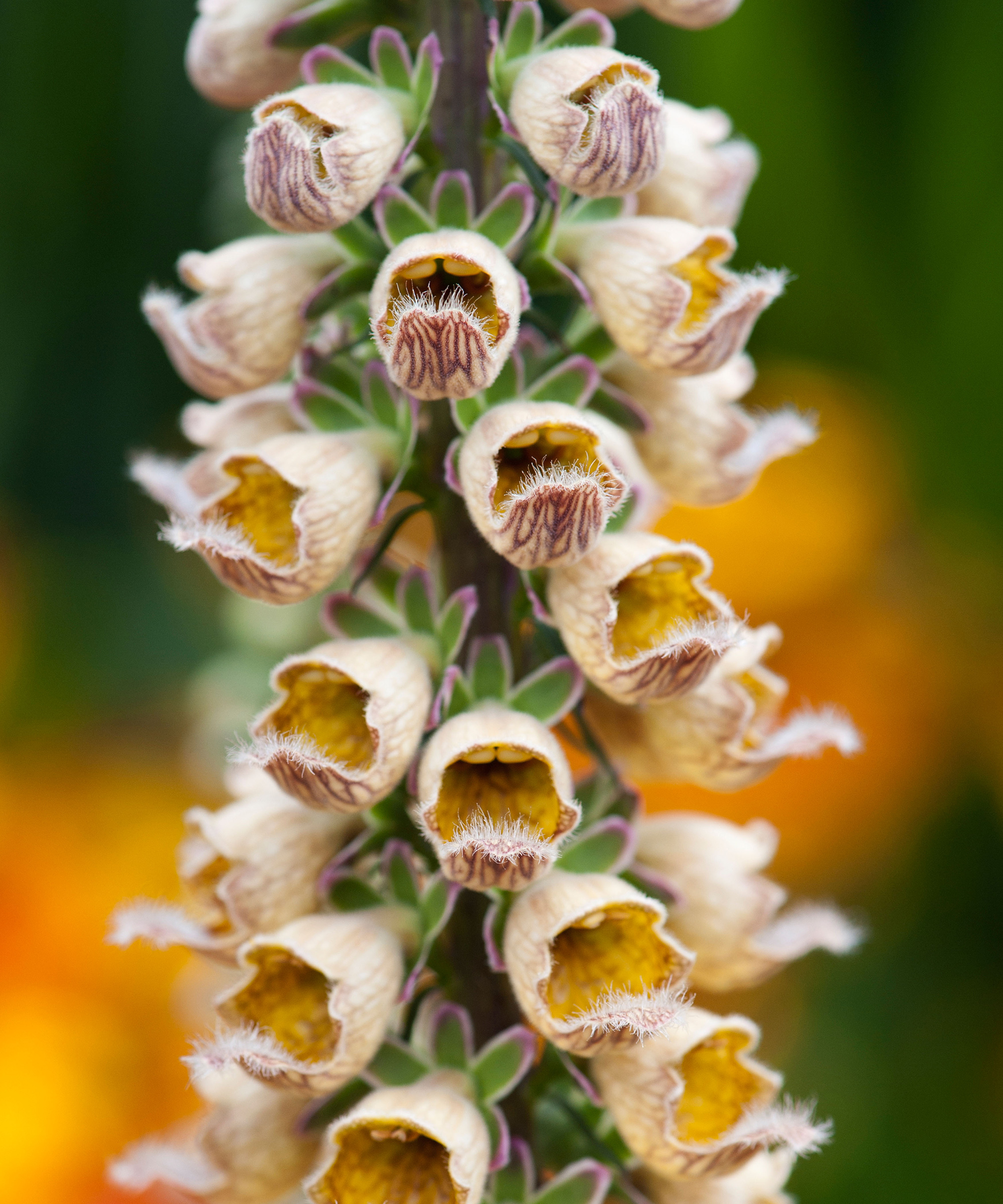
- Hardiness: USDA 4-8
- Height: 3-4ft (90-120cm)
This foxglove variety is a short-lived impressive perennial for sun or semi-shade.
The rusty foxglove, as it is also known, produces tall stems that bear small trumpets of coppery-yellow, veined brown. You can purchase seeds to grow this unique foxglove variety from Walmart.
Complement the copper tones by growing the purple flowering Angelica gigas alongside it.
5. Digitalis parviflora Jacq.
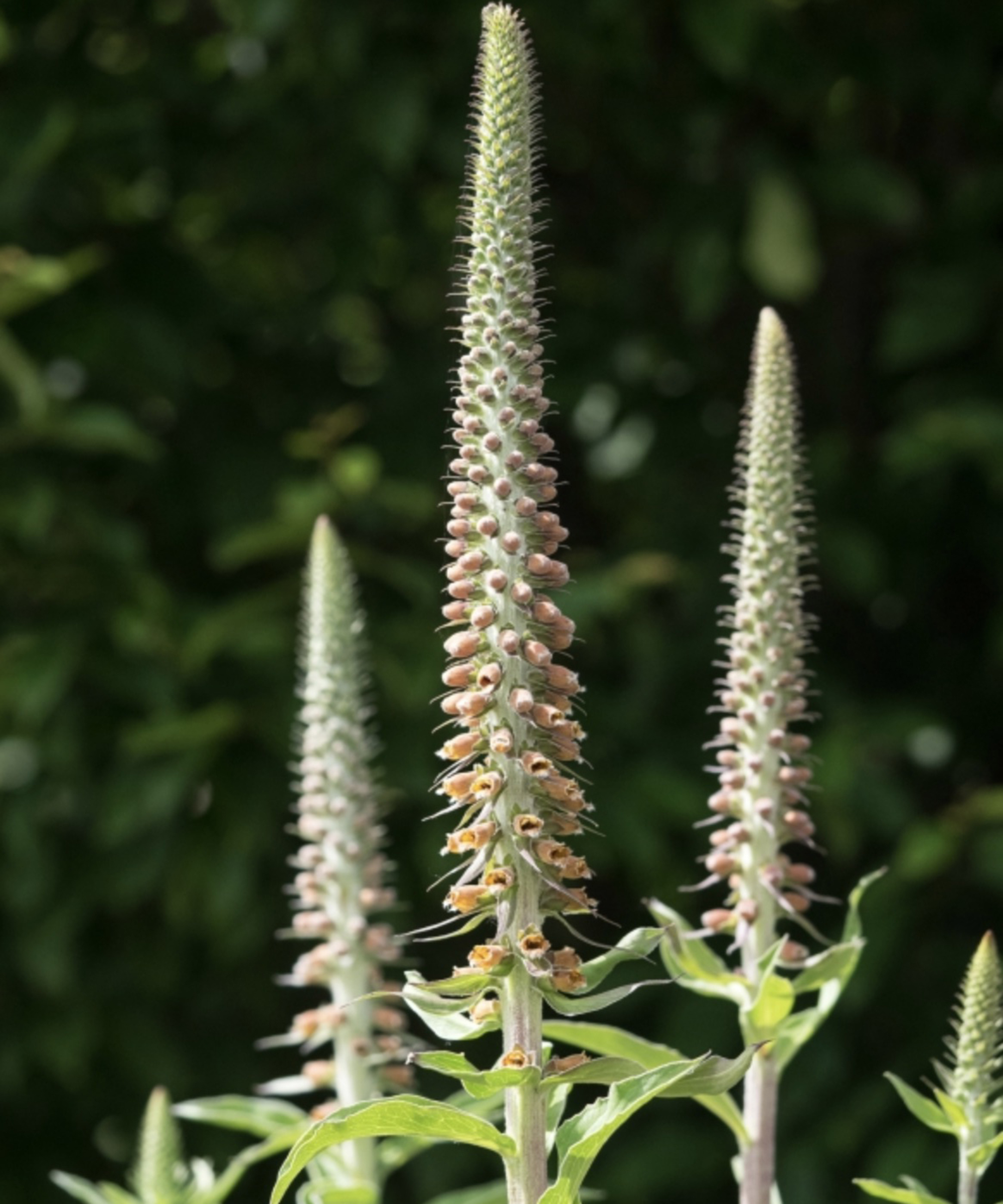
- Hardiness: USDA 5-8
- Height: 2ft (60cm)
The small-flowered foxglove is a stylish perennial from the Spanish mountains that has small bronze-brown flowers on downy white flower stems above long green leaves in early summer.
Grow this short-lived perennial in well-drained humus-rich soil types in semi-shade.
The clump-forming perennial Tellima grandiflora is a good planting partner.
6. Digitalis lanata

- Hardiness: USDA 5-8
- Height: 3ft (90cm)
The Grecian foxglove has white, cappuccino, and yellow bell flowers on downy stems. These bee friendly plants will be visited by pollinators in summer.
Grow these short-lived perennial foxgloves in retentive, well-drained soil in sun or semi-shade. Boost the color impact by planting it alongside the long flowering Geum ‘Totally Tangerine’.
Be aware that D. lanata has become an invasive plant in some parts of North America, so always check with your local extension before planting.
7. Digitalis obscura
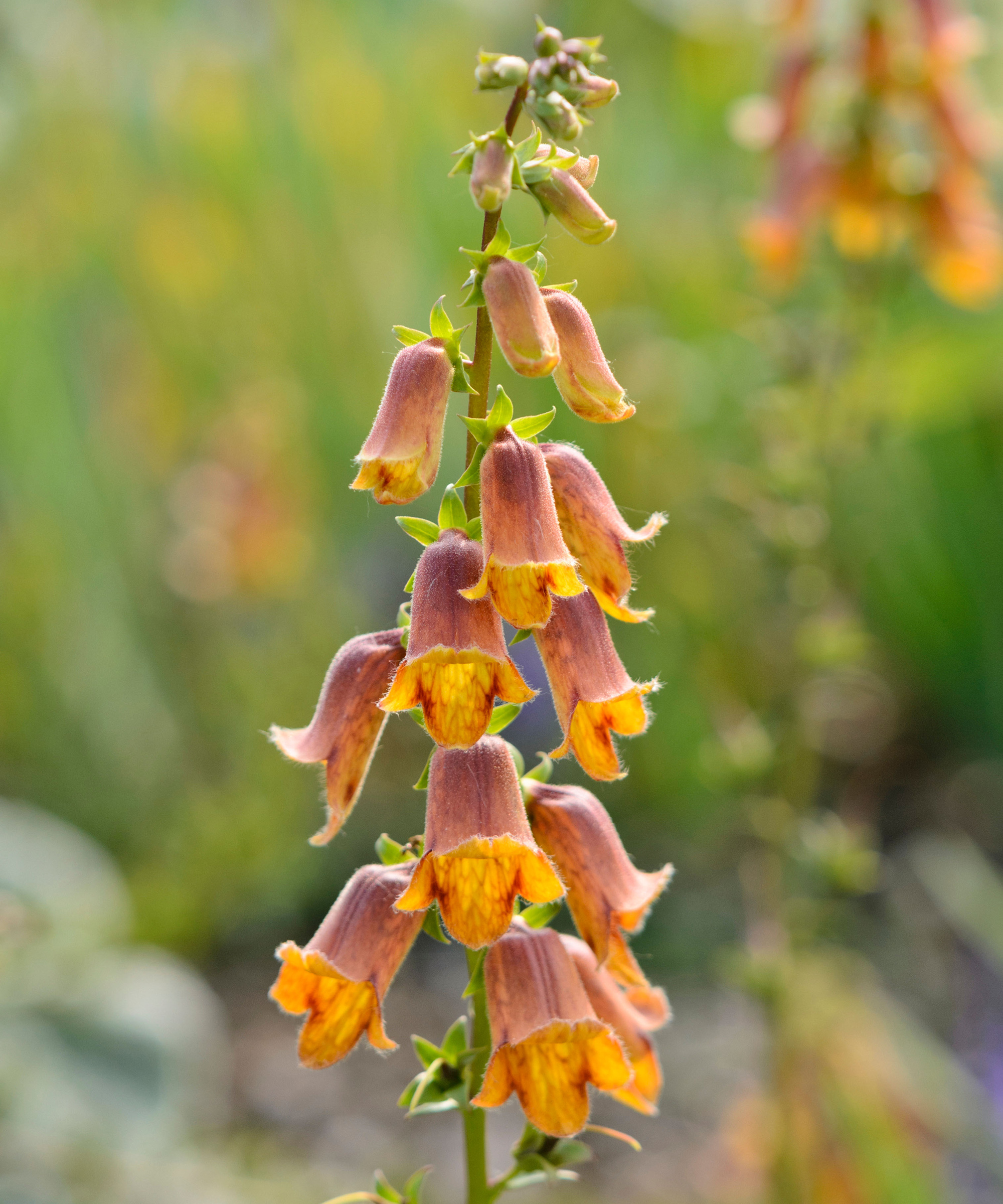
- Hardiness: USDA 6-9
- Height: 2-3ft (60-90cm)
The sunset foxglove is a short-lived shrubby perennial from Spain and North Africa, which has warm gold and rust-orange flowers on chocolate stems above willow-like leaves in late spring and summer.
Grow in humus-rich well-drained soil in semi-shade or sun. It may self-seed.
For a garden color scheme with plenty of impact, combine it with the purple flowering Salvia nemorosa ‘Caradonna'.
8. Digitalis purpurea ’Sutton’s Apricot’
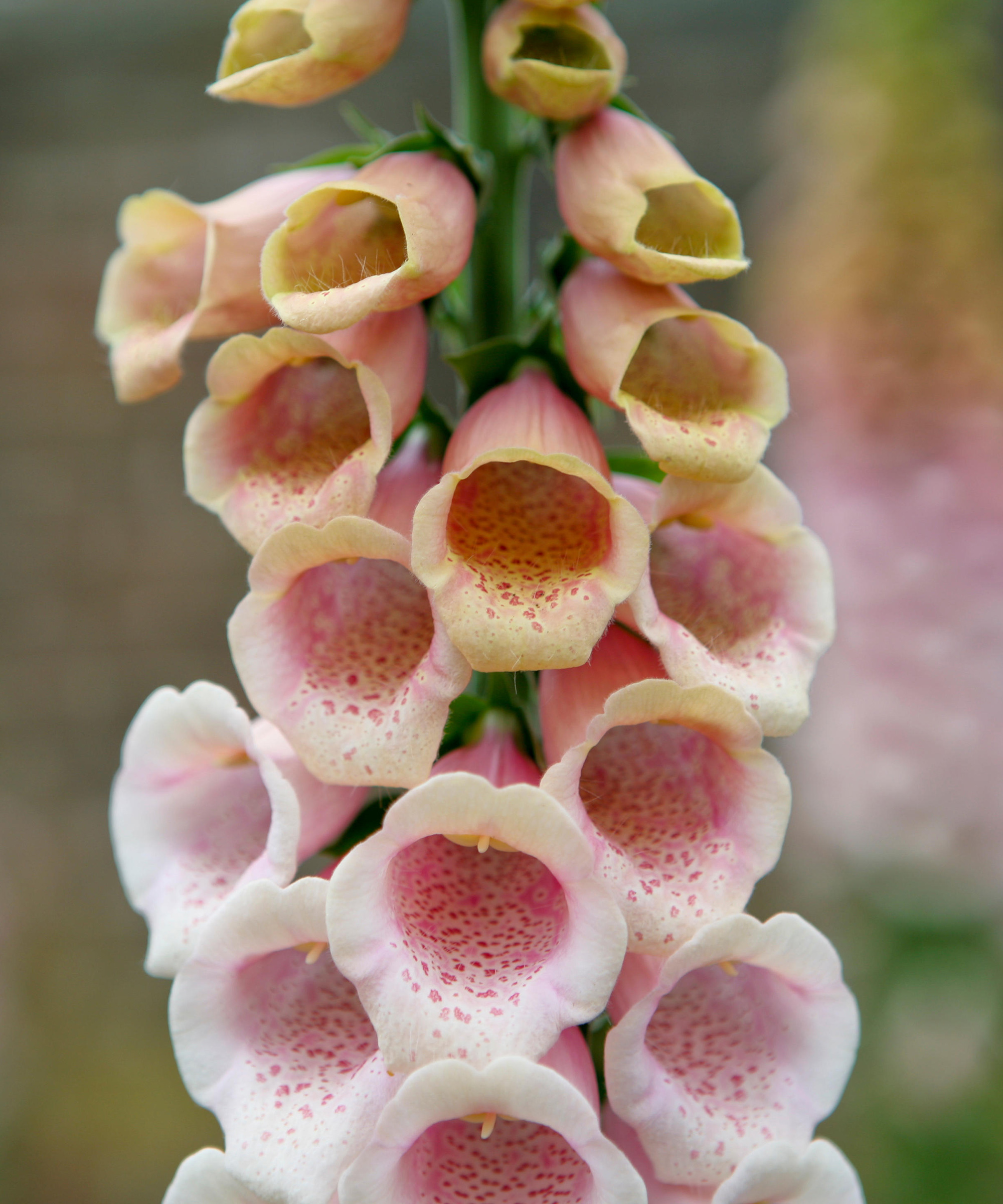
- Hardiness: USDA 4-9
- Height: 4-5ft (1.2-1.5m)
Spires of creamy pink-peach bell flowers adorn this popular biennial form in late spring and early summer.
Perfect in cottage gardens in well-drained, humus-rich soil in semi-shade. It is also happy in full sun, as long as the soil doesn’t dry out.
Combine with Hesperis matronalis, which is also a great plant for pollinators.
You can find similar peach-colored foxglove starter plants from Amazon.
9. Digitalis canariensis (syn. Isoplexis canariensis)

- Hardiness: USDA 8-10
- Height: 2-5ft (75cm-1.5m)
The Canary Island foxglove is a fabulous evergreen shrub that bears plum spikes of pale-orange flowers in summer.
These orange foxgloves will look brilliant as a tropical plant for a jungle-style border. Grow in sheltered sun or semi-shade in mild areas; overwinter indoors in cold regions.
Maximize the color impact by growing alongside the equally vibrant Hedychium densiflorum 'Assam Orange'.
10. Digitalis purpurea f. albiflora
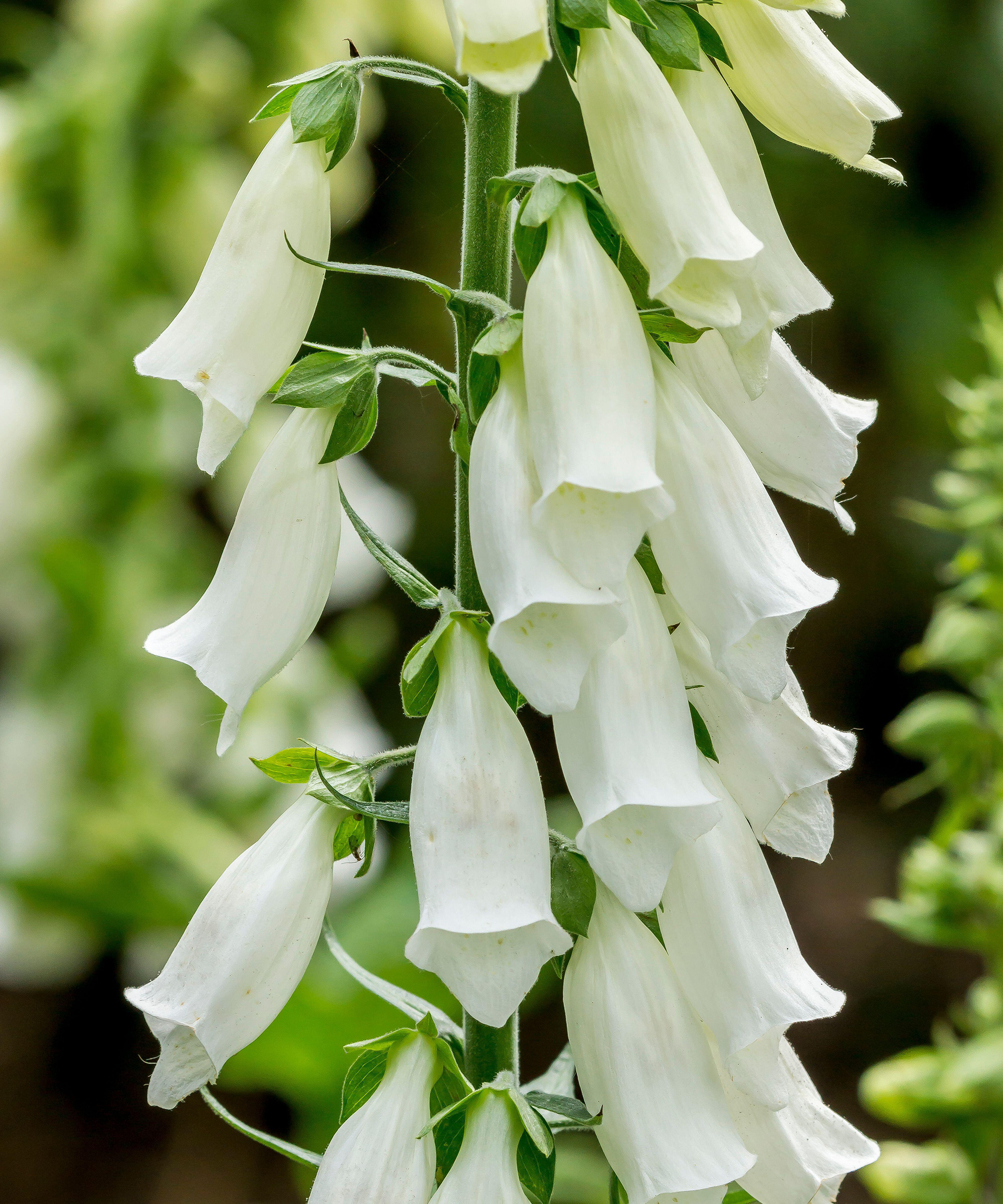
- Hardiness: USDA 4-9
- Height: 4-5ft (1.2-1.5m)
The pure white form of this UK native foxglove stands like candlesticks amongst the fresh greens of late spring.
This is a great biennial for bees and is best when grown as a shade-loving plant.
Combine with Anthriscus sylvestris 'Ravenswing', which has small white flowers in late spring and early summer.
11. Digitalis purpurea subsp. heywoodii 'Silver Fox’
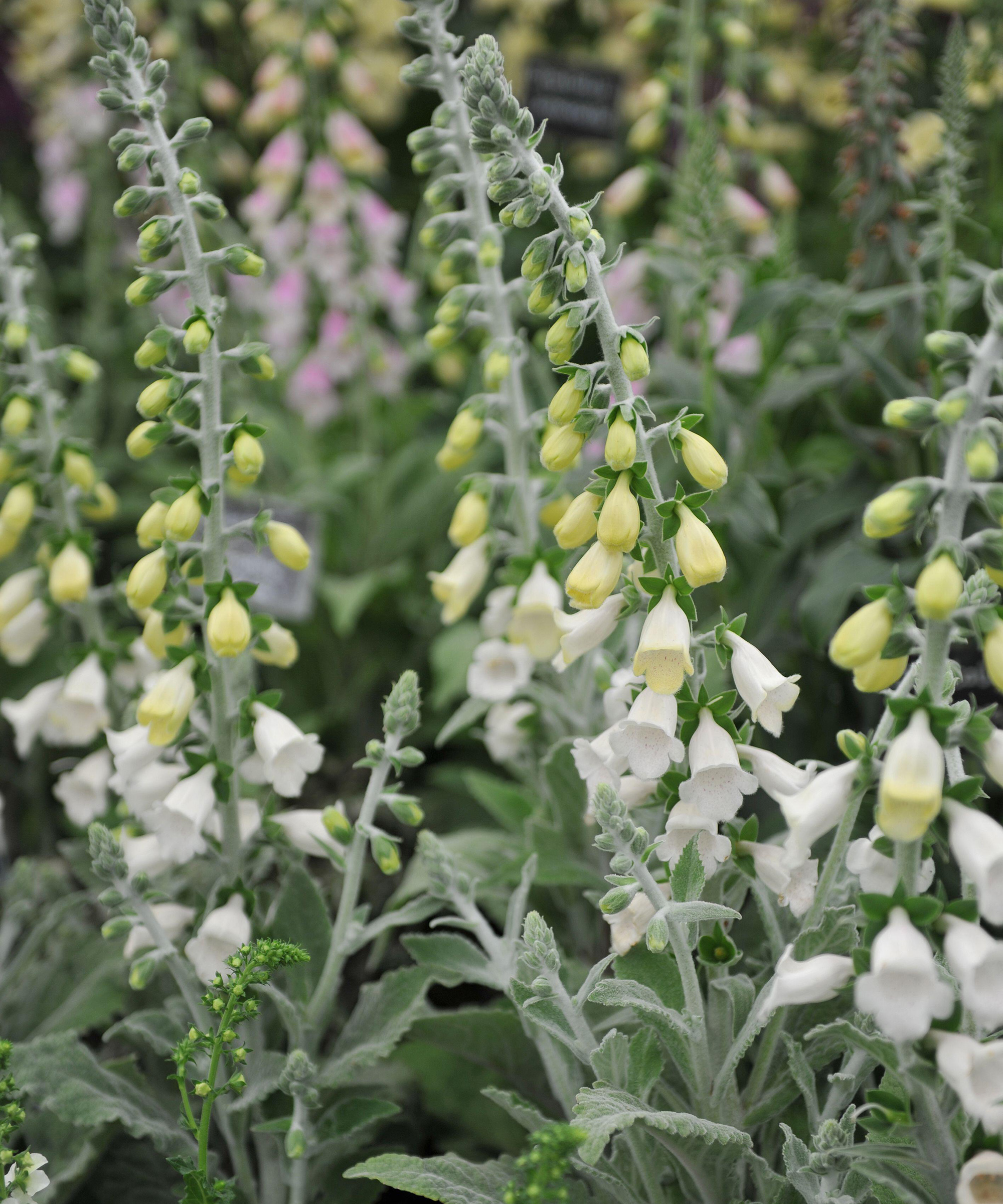
- Hardiness: USDA 5-9
- Height: 2.5ft (60-75cm)
This lovely biennial foxglove has ivory-white thimble flowers that are sometimes flushed pale pink, with spotted throats, above downy silver-grey foliage, in summer.
Grow in garden borders comprised of humus-rich well-drained soil in semi-shade or sun.
A good planting partner is Athyrium niponicum var. pictum 'Silver Falls’.
12. Digitalis purpurea 'Dalmatian White' (Dalmatian Series)
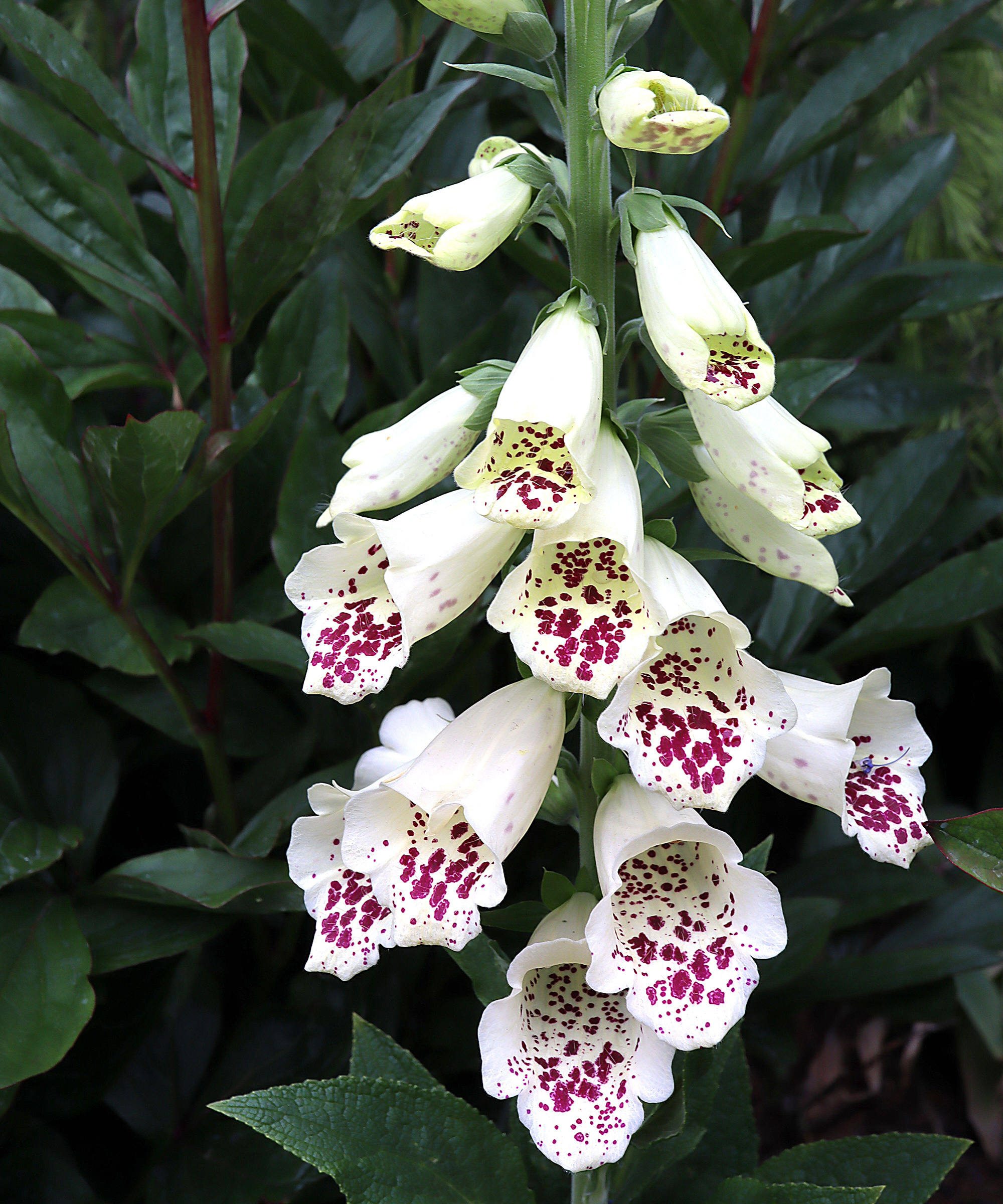
- Hardiness: USDA 4-9
- Height: 2ft (60cm)
- Planting partner: Astrantia major 'Claret'
With wands of bright-white flowers with purple-speckled throats through late spring to summer, this stunning variety is guaranteed to stand out from the crowd.
Unlike most forms of D. purpurea, this biennial or short-lived perennial blooms in its first year, in humus-rich well-drained soil in semi-shade. The 'dalmatian peach' foxglove variety is available to buy from Amazon.
Plant alongside Astrantia major 'Claret' for an effective planting combination.
13. Digitalis x mertonensis
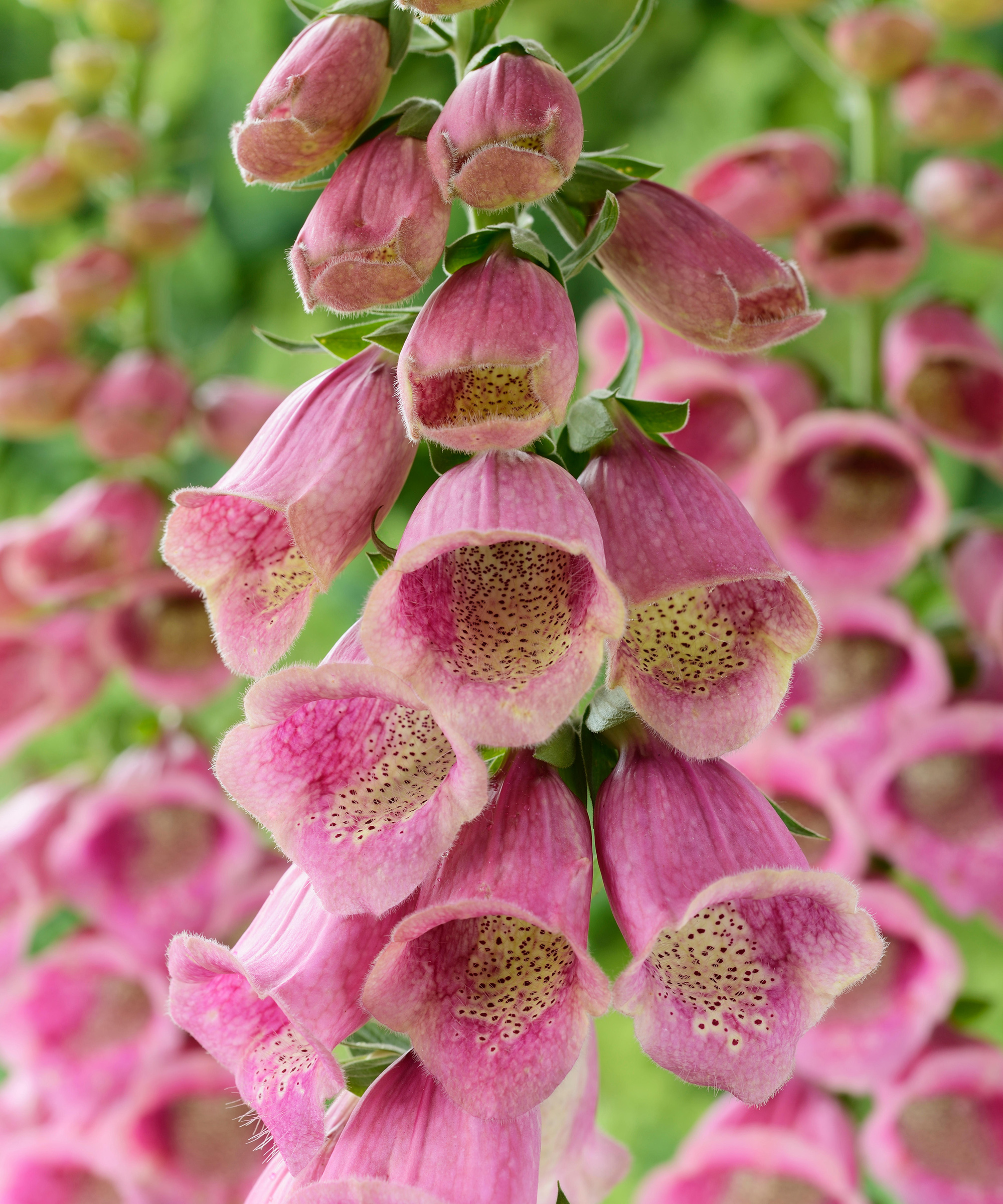
- Hardiness: USDA 4-8
- Height: 2-3ft (60-90cm)
The strawberry foxglove is a cross between D. purpurea and D. grandiflora, producing a perennial with dusky-pink bells in late spring.
It lives for 2-3 years in well-drained humus-rich soil in semi-shade. Many foxglove varieties, including this one, can be divided to give you extra free plants, or it can be grown from seed.
Try planting it with the semi-evergreen fern Dryopteris erythrosora.
14 Digitalis × valinii Foxlight Rose Ivory (Foxlight Series)
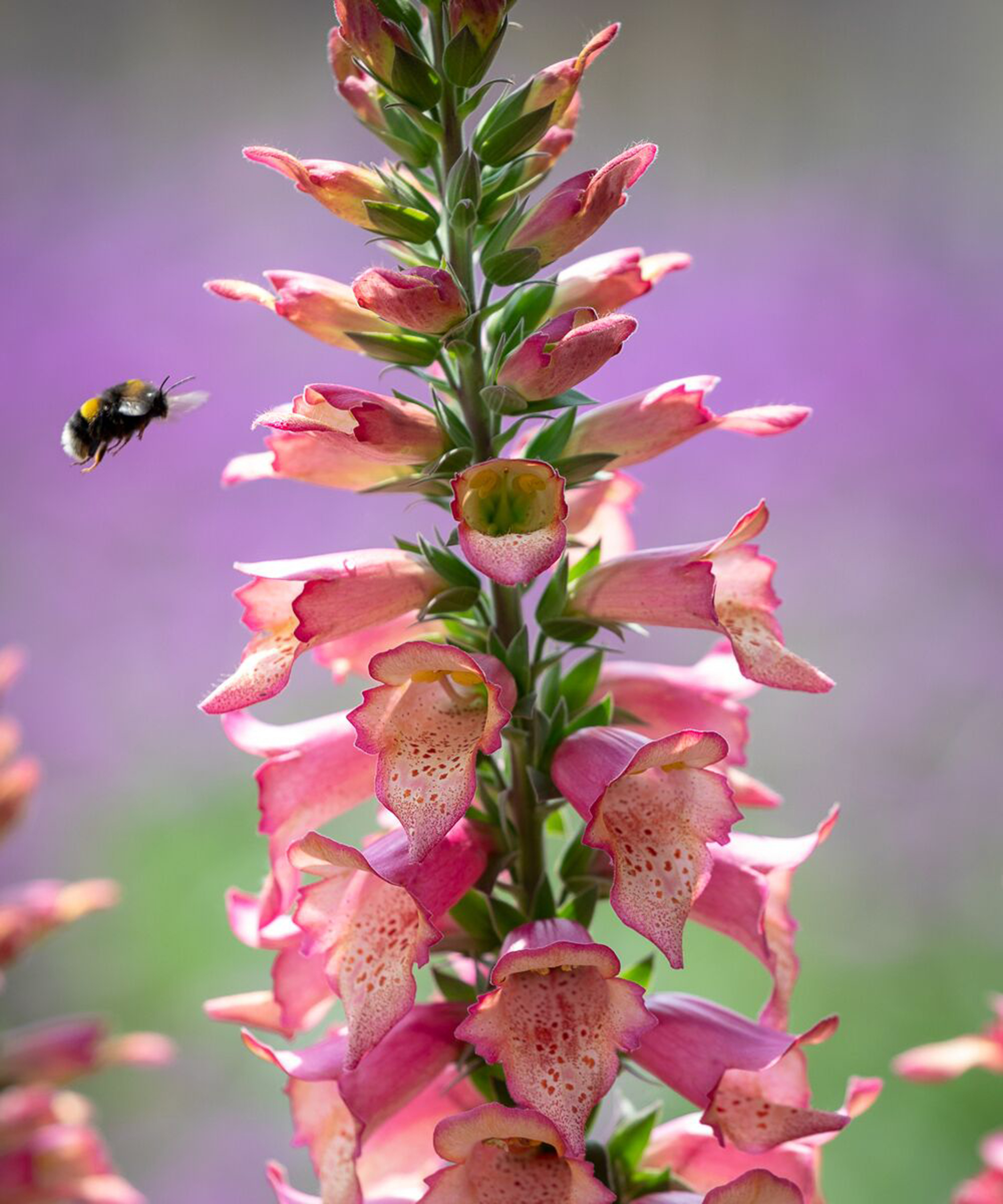
- Hardiness: USDA 7-10
- Height: 2ft (60cm)
This short-lived perennial form has pink flowers with spotted apricot throats over a long period, from late spring into late summer.
If you're keen on landscaping with flowers in your plot, this variety will be great at enticing bees.
Grow in mild areas in humus-rich retentive, well-drained soil in semi-shade or sun. It works well alongside bee balm, Monarda ‘Fireball'.
15. Digitalis purpurea ‘Pink Gin’

- Hardiness: USDA 4-9 (UK H7)
- Height: 4ft (1.2m)
An adorable cottage-garden style foxglove with soft-pink bell flowers that fade to buff, ivory, and white and have speckled throats.
Grow this biennial variety in humus-rich well-drained soil in semi-shade. It can be grown in sun as long as the soil does not dry out.
Add some depth of color to your planting mix by combining it with the purple tones of Nepeta 'Six Hills Giant'.
16. Digitalis purpurea ‘Camelot Lavender’ (Camelot Series)
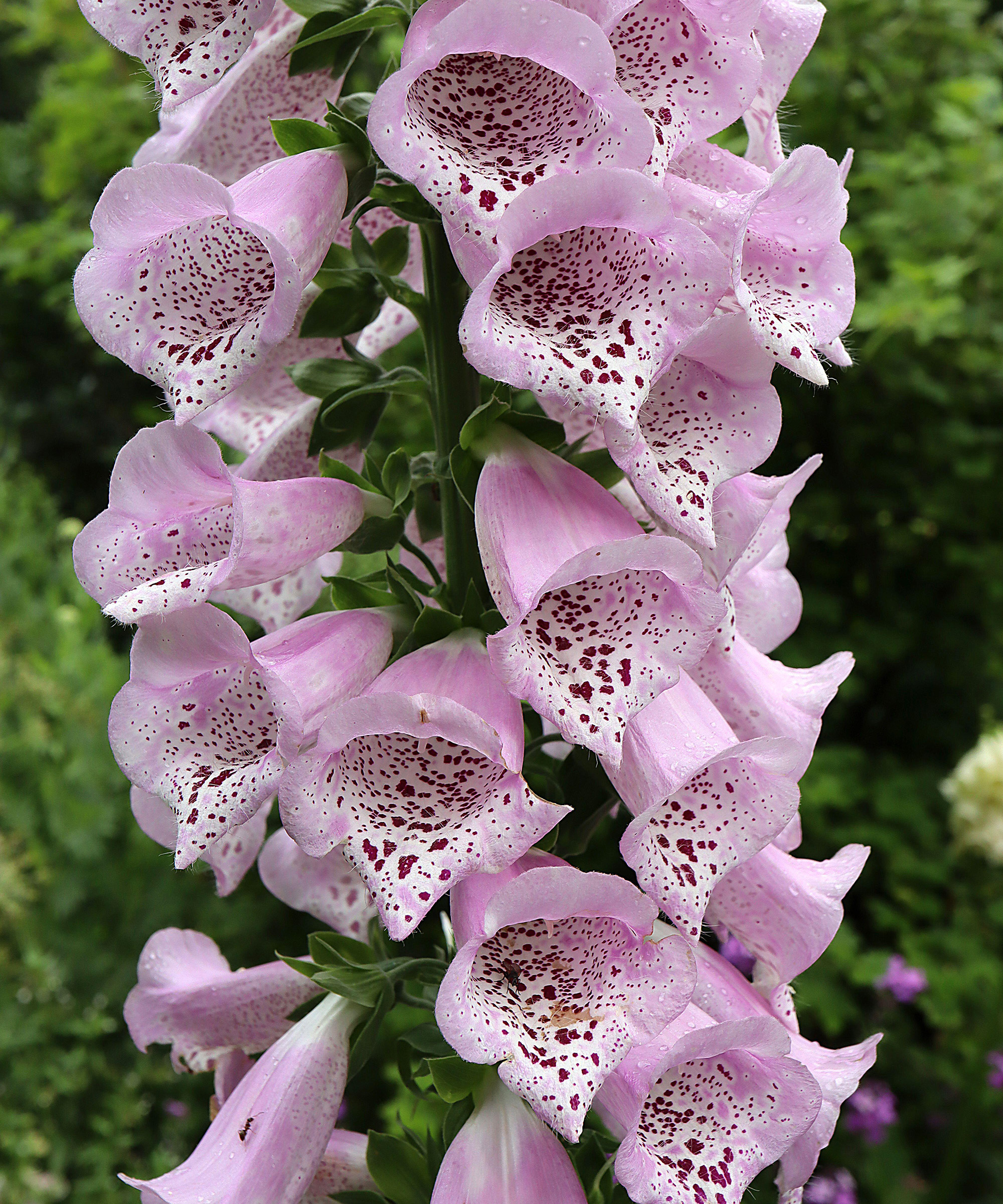
- Hardiness: USDA 4-9
- Height: 3-4ft (90-120cm)
Choose this variety and you'll get to enjoy spires of speckled lavender-pink flowers all around the stems in late spring and summer. You can find Digitalis purpurea ‘Camelot Lavender’ at Nature Hills.
This floriferous F1 hybrid blooms in its first year and can live for 2-3 years in well-drained humus-rich soil in semi-shade or full sun.
A good planting partner is the small shrub Rosa gallica ‘Versicolor’.
If you want to make your foxglove plants last as long as possible, it's useful to know what to do with foxgloves after they finish flowering, so you can be ready to deadhead and collect seeds to create new plants for free the following season.

Teresa was part of a team that launched Easy Gardens magazine two years ago and edited it for some time. Teresa has been a Gardens Editor at Homes & Gardens, Country Homes & Interiors and Living Etc magazine since 2020 and has developed close working relationships with top garden designers, and has been exposed to an array of rich garden content and expertise.
- Rachel BullHead of Gardens